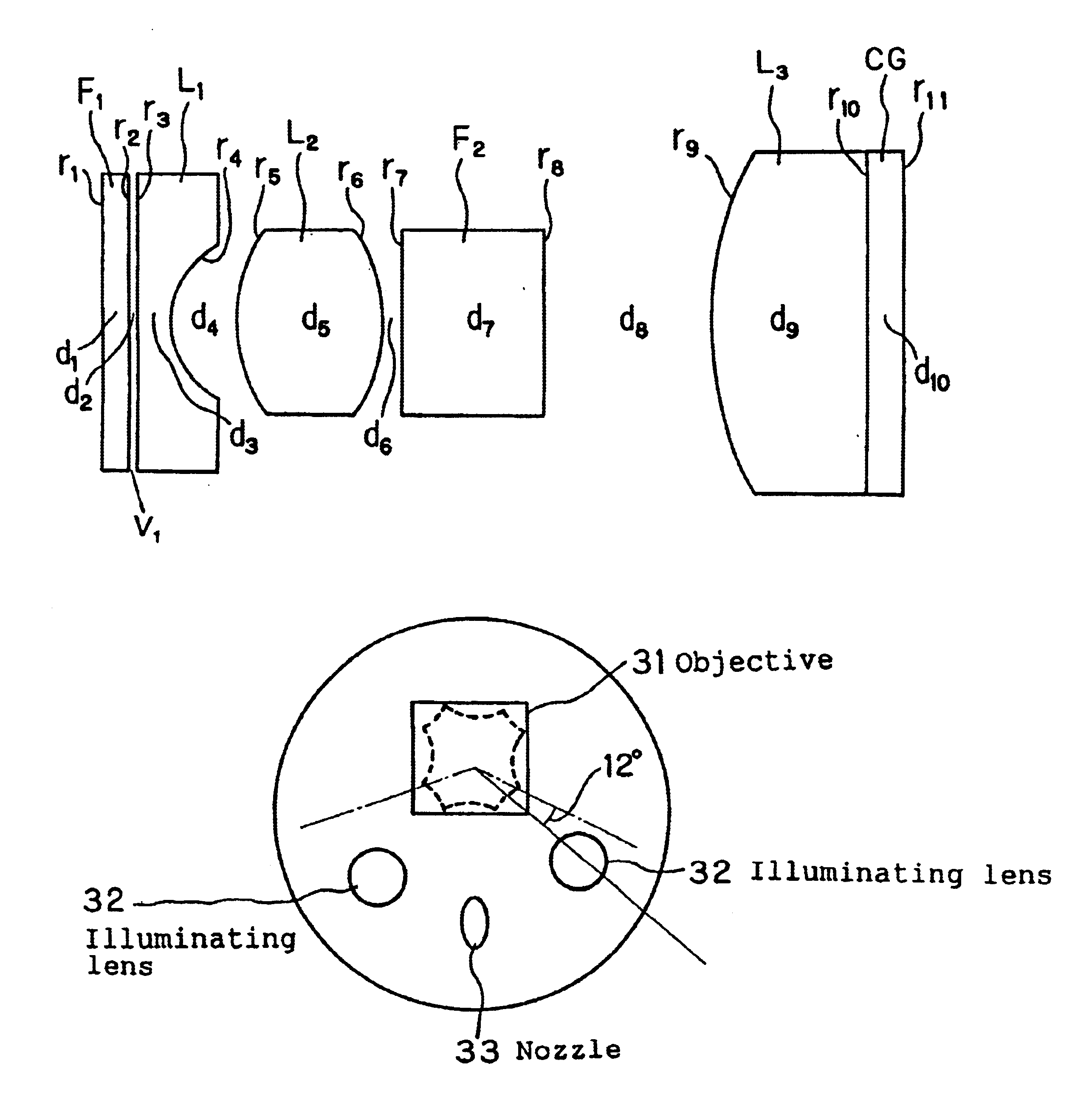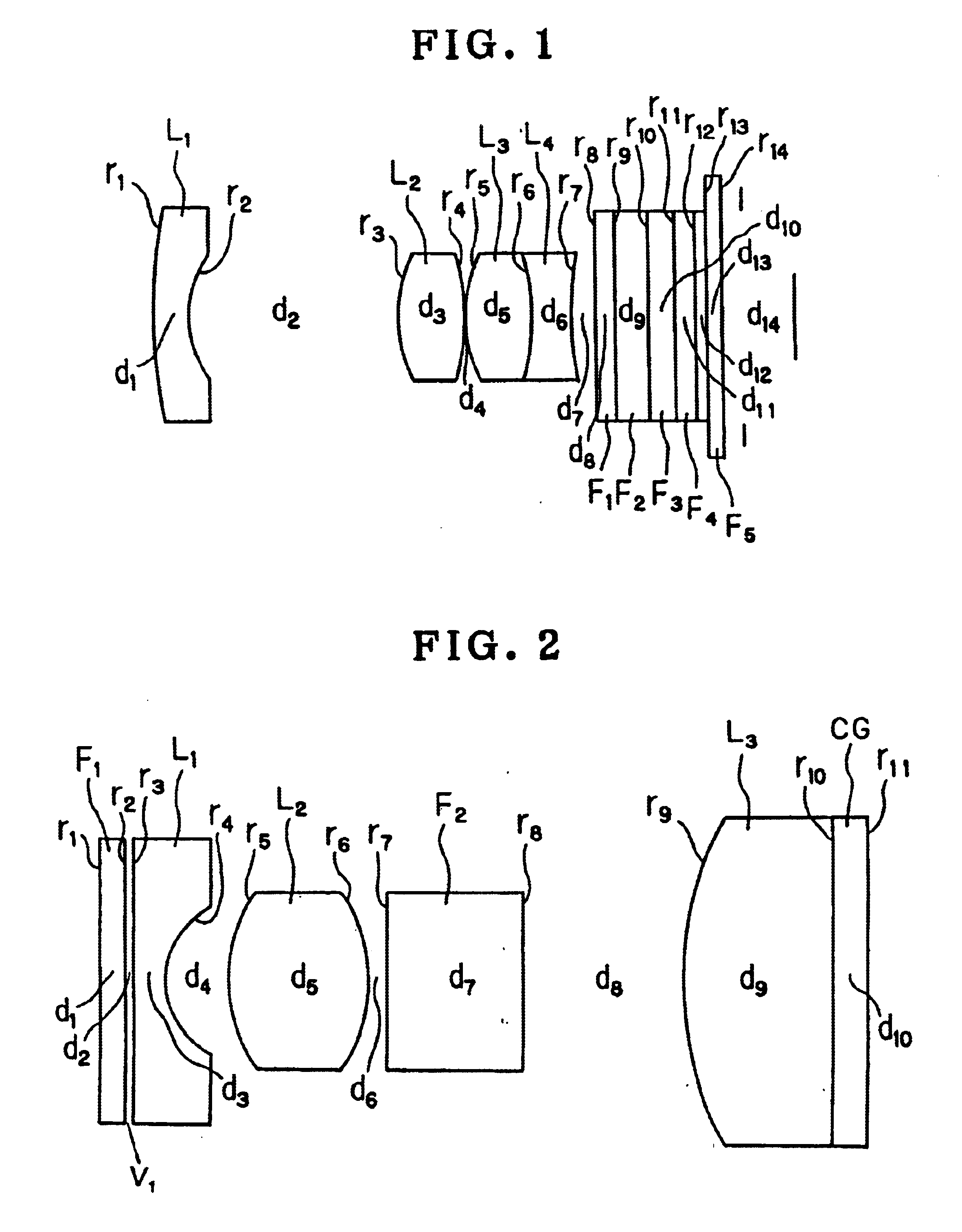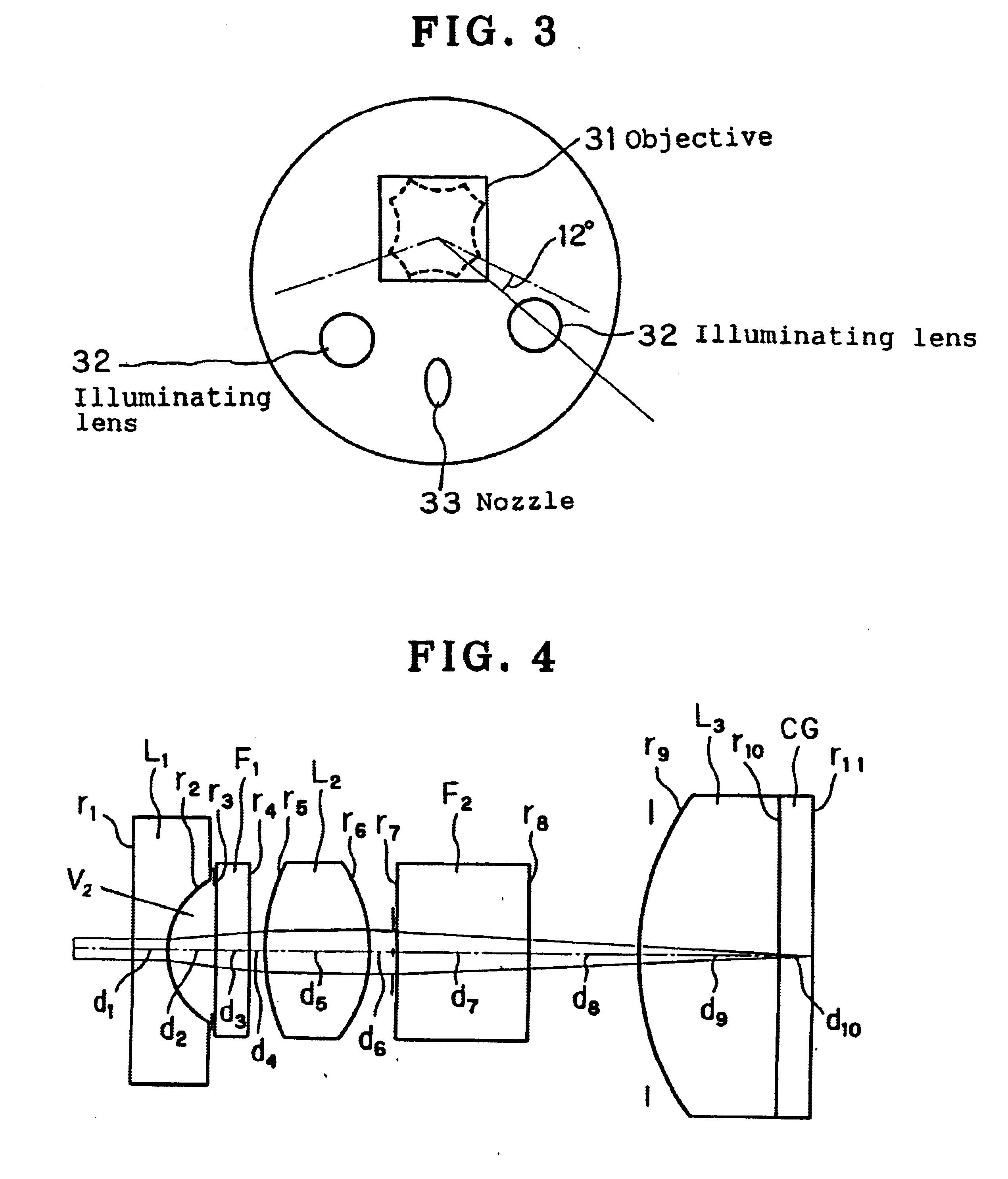Endoscope image pickup optical system
an endoscope and optical system technology, applied in the field of endoscope image pickup optical system, can solve the problems of difficult diagnosis, difficult operation of optical system, and difficulty in determining the correct size of the endoscope, so as to reduce the outer diameter of the endoscope, increase the outer diameter, and increase the hardness of the knoop
- Summary
- Abstract
- Description
- Claims
- Application Information
AI Technical Summary
Benefits of technology
Problems solved by technology
Method used
Image
Examples
example 1
[0068]FIG. 1 shows a sectional view of a lens system constituting an optical system of an electronic camera according to Example 1. Example 1 has lens data as shown in Table 1, which will be shown later. In the table: f denotes the focal length of the entire system; 2ω denotes the field angle; FNo denotes the F-number; r1, r2 . . . denote the radii of curvature of lenses; d1, d2 . . . denote the spacings between lens surfaces and the lens spacings; nd1, nd2 . . . denote the refractive indices of the lenses for the d-line (587 nm); and νd1, νd2 . . . denote the Abbe's numbers of the lenses for the d-line (587 nm). The same shall apply hereinafter.
[0069]Example 1 comprises, in order from the object side, a negative meniscus lens L1 having a convex surface directed toward the object side, a double-convex positive lens L2, a cemented lens consisting of a double-convex positive lens L3 and a double-concave negative lens L4, plane-parallel plates F1 to F5, and a CCD. It should be noted th...
example 2
[0071]FIG. 1 shows a sectional view of a lens system constituting an endoscope optical system according to Example 2. Example 2 has lens data as shown in Table 2, which will be shown later.
[0072]Example 2 comprises, in order from the object side, a plane-parallel plate glass or optical filter F1, a plano-concave negative lens L1, a double-convex positive lens L2, a filter F2 of plane-parallel plate for preventing infrared rays from entering the CCD, a convexo-plane positive lens L3, and a cover glass CG for the CCD. Among the optical elements, the optical filter F1 and the plano-concave negative lens L1 are quadrangular optical elements so as to be conformable to the shape of the effective image pickup-area of the CCD and to minimize the size of the image pickup optical system. It should be noted that the image-side plane surface of the convexo-plane plane positive lens L3 and the CCD cover glass CG are cemented together with an optical cement.
[0073]The CCD used in this image pickup...
example 3
[0080]FIG. 4 shows a sectional view of a lens system constituting an endoscope optical system according to Example 3. Example 3 has lens data as shown in Table 3, which will be shown later.
[0081]Example 3 comprises, in order from the object side, a plano-concave negative lens L1, a plane-parallel plate F1, a double-concave positive lens L2, a filter F2 of plane-parallel plate for preventing infrared rays from entering the CCD, a convexo-plane positive lens L3, and a cover glass CG for the CCD. It should be noted that the image-side plane surface of the convexo-plane positive lens L3 and the CCD cover glass CG are cemented together with an optical cement.
[0082]The CCD in this image pickup optical system is a color CCD employing an interline type complementary color filter, which is a high-density CCD with an average pixel pitch of 2.8 μm.
[0083]The focal length of this image pickup optical system is 1.539 mm, and the F-number thereof is 5.6. The area of a light beam forming an image a...
PUM
 Login to View More
Login to View More Abstract
Description
Claims
Application Information
 Login to View More
Login to View More - R&D
- Intellectual Property
- Life Sciences
- Materials
- Tech Scout
- Unparalleled Data Quality
- Higher Quality Content
- 60% Fewer Hallucinations
Browse by: Latest US Patents, China's latest patents, Technical Efficacy Thesaurus, Application Domain, Technology Topic, Popular Technical Reports.
© 2025 PatSnap. All rights reserved.Legal|Privacy policy|Modern Slavery Act Transparency Statement|Sitemap|About US| Contact US: help@patsnap.com



